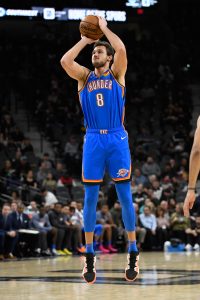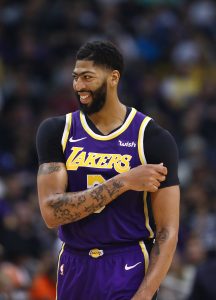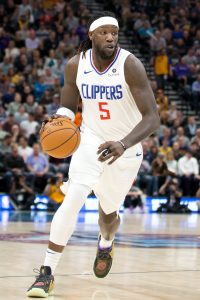Over the course of the 2019/20 NBA season, up until February’s trade deadline, we’re keeping an eye on potential trade candidates from around the NBA, monitoring their value and exploring the likelihood that they’ll be moved. Each of these looks at possible trade candidates focuses on a specific division, as we zero in on three players from that division.
This season’s trade deadline falls on February 6, so we should have plenty of time to visit and revisit all six divisions a few times before the deadline passes and teams become ineligible to make in-season deals.
Each installment in our trade candidate series for the 2019/20 season is linked below, along with a description of which players we discuss in each piece. We’ll continue to update this page – which can be found under the “Hoops Rumors Features” sidebar of our desktop page, or in the “Features” section of our mobile site – as we add new entries over the coming weeks and months.
Eastern Conference
Atlantic
- January 23
- Dennis Smith Jr. (Knicks)
- Raul Neto / Trey Burke (Sixers): Burke waived
- Rodions Kurucs (Nets)
- December 24
- Marcus Morris (Knicks): Traded
- Zhaire Smith (Sixers)
- Stanley Johnson (Raptors)
- November 21
- Wayne Ellington (Knicks)
- Reggie Bullock (Knicks)
- Taj Gibson (Knicks)
Central
- January 28
- Denzel Valentine (Bulls)
- Derrick Rose (Pistons)
- John Henson (Cavaliers): Traded
- January 10
- Andre Drummond (Pistons): Traded
- Thaddeus Young (Bulls)
- Myles Turner (Pacers)
- December 12
- Kevin Love (Cavaliers)
- Ersan Ilyasova (Bucks)
- Reggie Jackson (Pistons)
- November 12
- Tristan Thompson (Cavaliers)
- Langston Galloway (Pistons)
- Kris Dunn (Bulls)
Southeast
- December 31
- Evan Fournier (Magic)
- Justise Winslow (Heat): Traded
- Marvin Williams (Hornets)
- November 29
- Davis Bertans (Wizards)
- Jabari Parker (Hawks): Traded
- Aaron Gordon (Magic)
- November 1
- Dion Waiters (Heat): Traded
- Willy Hernangomez (Hornets)
- C.J. Miles (Wizards): Waived
Western Conference
Northwest
- January 15
- Robert Covington (Timberwolves): Traded
- Juan Hernangomez (Nuggets): Traded
- Justin Patton (Thunder): Traded
- December 20
- Malik Beasley (Nuggets): Traded
- Danilo Gallinari (Thunder)
- Dante Exum (Jazz): Traded
- November 19
- Chris Paul (Thunder)
- Jeff Teague (Timberwolves): Traded
- Hassan Whiteside (Trail Blazers)
Pacific
- January 7
- Kyle Kuzma (Lakers)
- Dewayne Dedmon (Kings): Traded
- Tyler Johnson (Suns)
- December 3
- Trevor Ariza (Kings): Traded
- Willie Cauley-Stein (Warriors): Traded
- Maurice Harkless (Clippers): Traded
- November 6
- Bogdan Bogdanovic (Kings)
- Alec Burks (Warriors): Traded
- DeMarcus Cousins (Lakers)
Southwest
- January 17
- DeMarre Carroll (Spurs)
- Jae Crowder (Grizzlies): Traded
- Derrick Favors (Pelicans)
- December 18
- Jrue Holiday (Pelicans)
- DeMar DeRozan (Spurs)
- Jae Crowder (Grizzlies): Traded
- November 14
- Andre Iguodala (Grizzlies): Traded
- Courtney Lee (Mavericks)
- Nene (Rockets): Traded
 Danilo Gallinari
Danilo Gallinari

